Seismic Data Processing
Dynamic Matching FWI
Do you desire an improved imaging of your prospect with complex velocity issues? Then our Dynamic Matching FWI is the right tool to help build your high-resolution velocity model, for effective resolution of faulted overburden and lateral velocity variation.
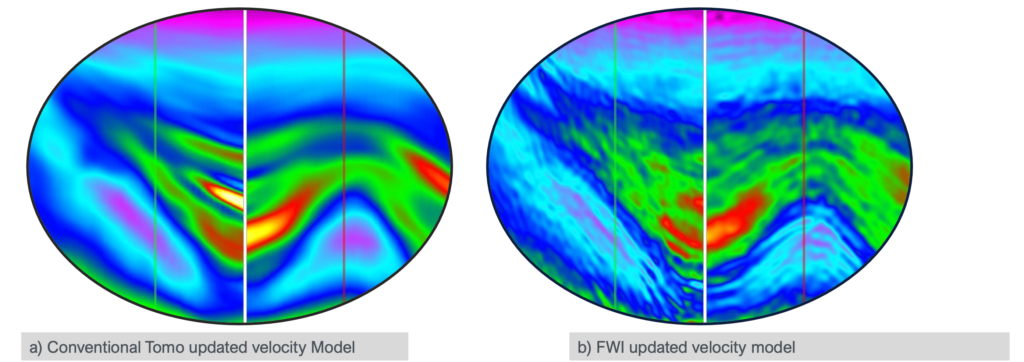
Our data-driven Dynamic Matching Full Wave Inversion (FWI) algorithm delivers superior velocity model and angle-dependent reflectivity directly from raw seismic data, for faster, more accurate and comprehensive earth models as compared to conventional imaging.

Dynamic Matching FWI
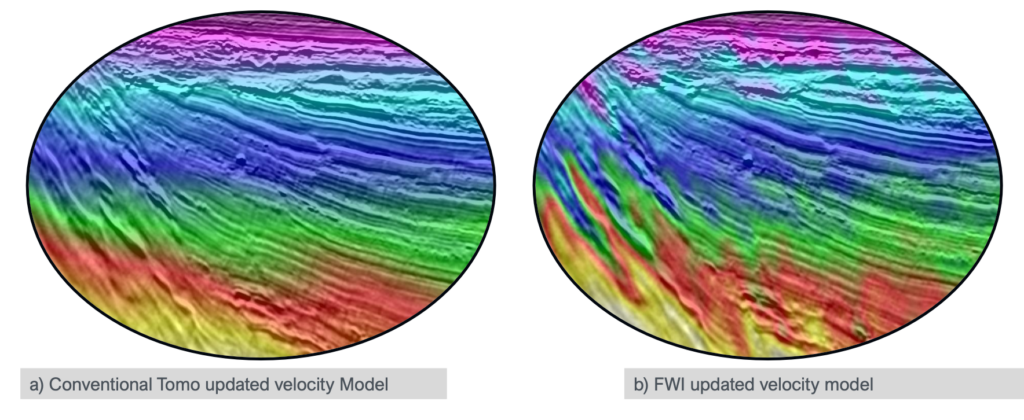
Dynamic Matching FWI
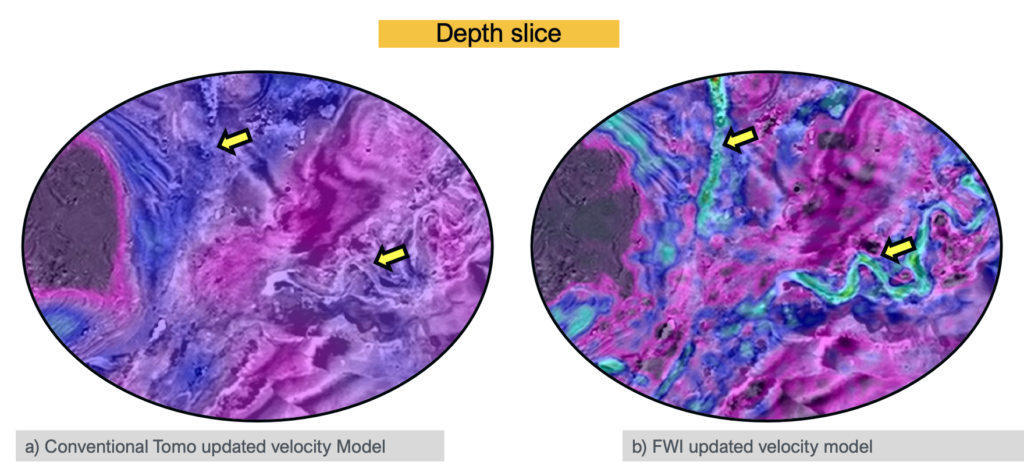
Q-Model Migration
More clarity on your overburden? Our Q-Model Migration offers the solution.
Our Kirchhof Q-Model Migration solution, produces seismic products with better event continuity, enhanced stacking response, improved signal-to-noise ratio and clearer fault definition.
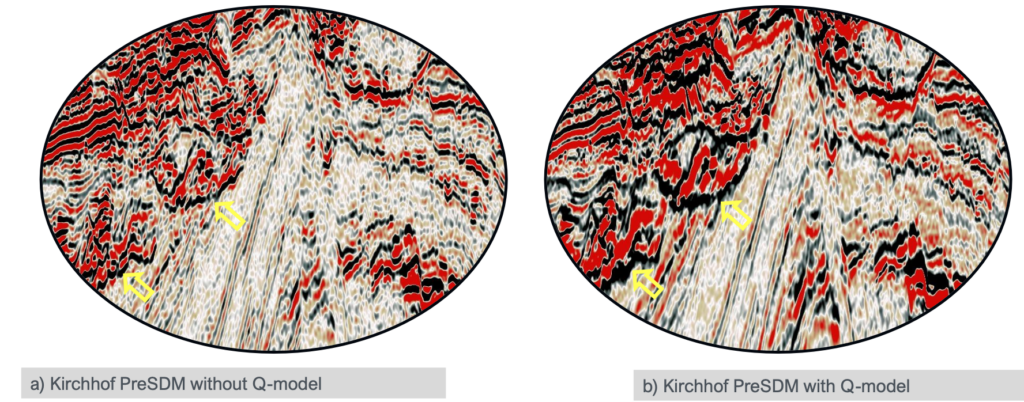
Do you want a high level Signal-to-Noise Ratio on your seismic data? Then think of our 3D Sparse Tau-P Deghosting, 3D SRME with Curvelet Adaptive Subtraction, and 4D MPFI Regularization workflows.
3D Sparse Tau-P Deghosting
3D Sparse Tau-P Deghosting to remove ghost energy and broaden spectrum
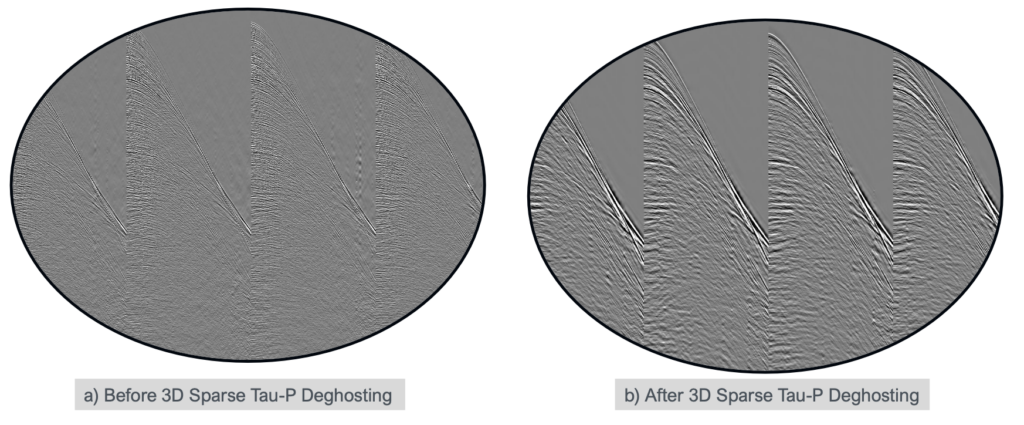
3D SRME
Our 3D SRME with Curvelet Adaptive Subtraction typically handles water bottom multiples effectively.

The 3D SRME with Curvelet Adaptive matching ensures water bottom multiples are predicted and subtracted accurately from the data without compromising primary signals.
4D MPFI Regularization
Our 4D MPFI Regularization provides a robust interpolation for sparsely and irregular sampled data and fills areas with holes while preserving diffraction tails and weak events.
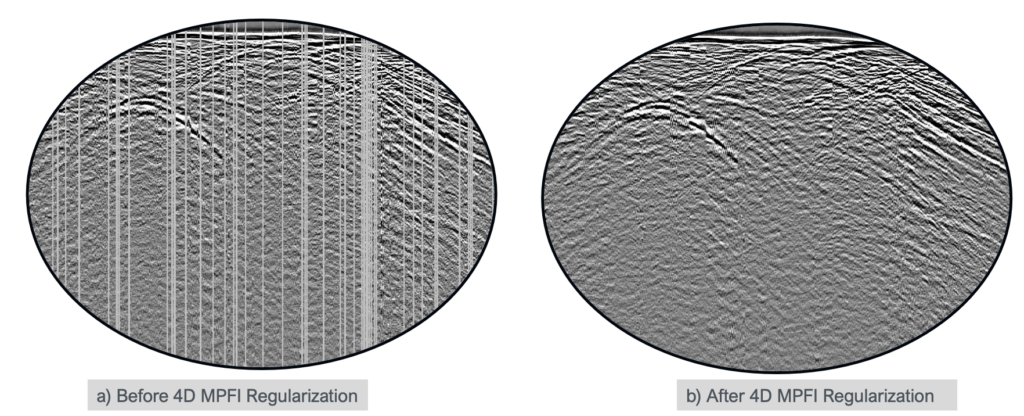
4D MPFI Regularization effectively filled gaps, reconstruct signal at bin centers, improve signal coherence, particularly at far offsets, and recover critical details in diffraction tails and fault planes.

